Merlot Sauce for Veal, Beef or Venison
Merlot sauce is a culinary delight, renowned for its rich flavor and versatility in enhancing a variety of dishes. Originating from the Bordeaux region of France, where Merlot grapes flourish, this sauce embodies elegance and sophistication.
Crafted from Merlot wine, the sauce exudes a deep, complex flavor profile with hints of berries, plum, and subtle earthiness, characteristic of the grape varietal. Its deep crimson hue adds a visually stunning element to any dish, creating a feast for the eyes and the palate.
Making Merlot sauce begins with reducing the wine to intensify its flavor and concentrate its natural sugars. This reduction is combined with a carefully curated blend of aromatics such as shallots, garlic, and fresh herbs like thyme and rosemary, adding depth and complexity to the sauce.
One of the most appealing aspects of Merlot sauce is its versatility. It pairs beautifully with various proteins, including beef, lamb, poultry, and game meats. Whether drizzled over a perfectly seared steak, glazed onto tender roasted chicken, or spooned alongside a succulent rack of lamb, Merlot sauce elevates each dish to new heights of culinary excellence.
Beyond its affinity for meat, Merlot sauce admirably complements vegetarian and vegan fare. Paired with hearty vegetables like roasted mushrooms or grilled eggplant, it adds a luxurious touch that transforms a simple dish into a gourmet masterpiece.
In addition to its finishing sauce, Merlot sauce is a versatile base for other culinary creations. It can be incorporated into pasta dishes, risotto, and even soups to impart a depth of flavor that tantalizes the taste buds and leaves a lasting impression.
With its rich flavor, vibrant color, and unparalleled versatility, Merlot sauce is a testament to French cuisine’s artistry. Whether enjoyed in a fine dining establishment or prepared at home with care and attention to detail, it will surely delight even the most discerning palates.
Merlot Sauce Recipe
Ingredients
- 1 shallot minced
- 1 tablespoon butter
- 1 cup Merlot wine
- 1 teaspoon dried thyme
- 1 cup demi glace
- 2 ounces heavy cream
- salt and pepper to taste
Instructions
- Heat up a sauce pan and when hot, add the butter.
- Sauté the shallot in the butter on medium high heat for 3 - 4 minutes.
- Add the Merlot and thyme, and reduce by three quarters.
- Add the demi glace and simmer for a few minutes.
- Whisk in the heavy cream.
- Taste and season with salt and pepper, to taste.
Foods That Pair Well with Merlot Sauce
Food | Description | Why It Pairs Well |
| Beef Tenderloin | Lean, tender cut of beef often served medium-rare. | Merlot’s soft tannins and fruitiness complement the mild, buttery texture of the meat. |
| Roast Chicken | Herb-roasted or pan-seared bone-in chicken. | The sauce brings richness and moisture to the delicate flavors of roasted chicken. |
| Pork Chops | Grilled or pan-seared, bone-in or boneless pork chops. | The sauce’s fruity notes enhance pork’s natural sweetness and provide depth. |
| Veal Medallions | Tender veal cutlets, lightly seared or sautéed. | Merlot sauce adds complexity and elegance without overwhelming the subtle veal. |
| Duck Breast | Pan-seared duck breast with crispy skin. | Duck’s richness matches well with Merlot’s soft berry notes and savory reduction. |
| Mushroom Ragù over Polenta | A hearty vegetarian dish with wild mushrooms in a rich sauce over creamy polenta. | Merlot complements the earthy, umami-rich mushrooms and adds body to the meatless dish. |
| Grilled Lamb Chops | Herb-rubbed and grilled to medium or medium-rare. | Merlot’s mild tannins pair well with lamb’s bold flavor and any herbal crust or rub. |
| Beef Bourguignon | Classic French beef stew in red wine, usually with mushrooms and pearl onions. | A natural pairing—Merlot echoes the dish’s flavors and deepens the sauce. |
| Stuffed Bell Peppers | Filled with ground meat, rice, and herbs. | The Merlot sauce enriches this comfort food and ties together meat, rice, and vegetables. |
History of Merlot Sauce
Merlot sauce’s history is intertwined with France’s rich culinary traditions, particularly the Bordeaux region, renowned for its prestigious wines. Merlot, one of the primary grape varietals cultivated in Bordeaux, is the foundation for the wine and the sauce that bears its name.
It likely emerged as a natural extension of French culinary practices, which have long emphasized the art of sauce-making as a fundamental component of haute cuisine. In Bordeaux, where Merlot grapes are abundant, chefs only naturally experimented with incorporating the region’s prized wine into their sauces.
The roots of this sauce can be traced back to the traditional French reduction technique, a process in which liquids such as wine or stock are simmered and condensed to intensify their flavor. By reducing Merlot wine, chefs discovered they could create a luxurious sauce with a deep, complex flavor profile that beautifully complemented various dishes.
Over time, it became a staple in French cuisine, particularly in the haute cuisine tradition of fine dining establishments. Its versatility and ability to enhance the flavor of meats, poultry, and vegetables made it a favorite among chefs and diners.
As French culinary techniques spread globally, so did Merlot sauce’s popularity. Today, it can be found on menus worldwide, from Michelin-starred restaurants to home kitchens. While the basic principles of it remain rooted in French culinary tradition, chefs continue to innovate and experiment with different ingredients and flavor profiles to create unique variations of this beloved sauce.
The history is a testament to the enduring legacy of French cuisine and the ingenuity of chefs who have transformed humble ingredients into culinary masterpieces.
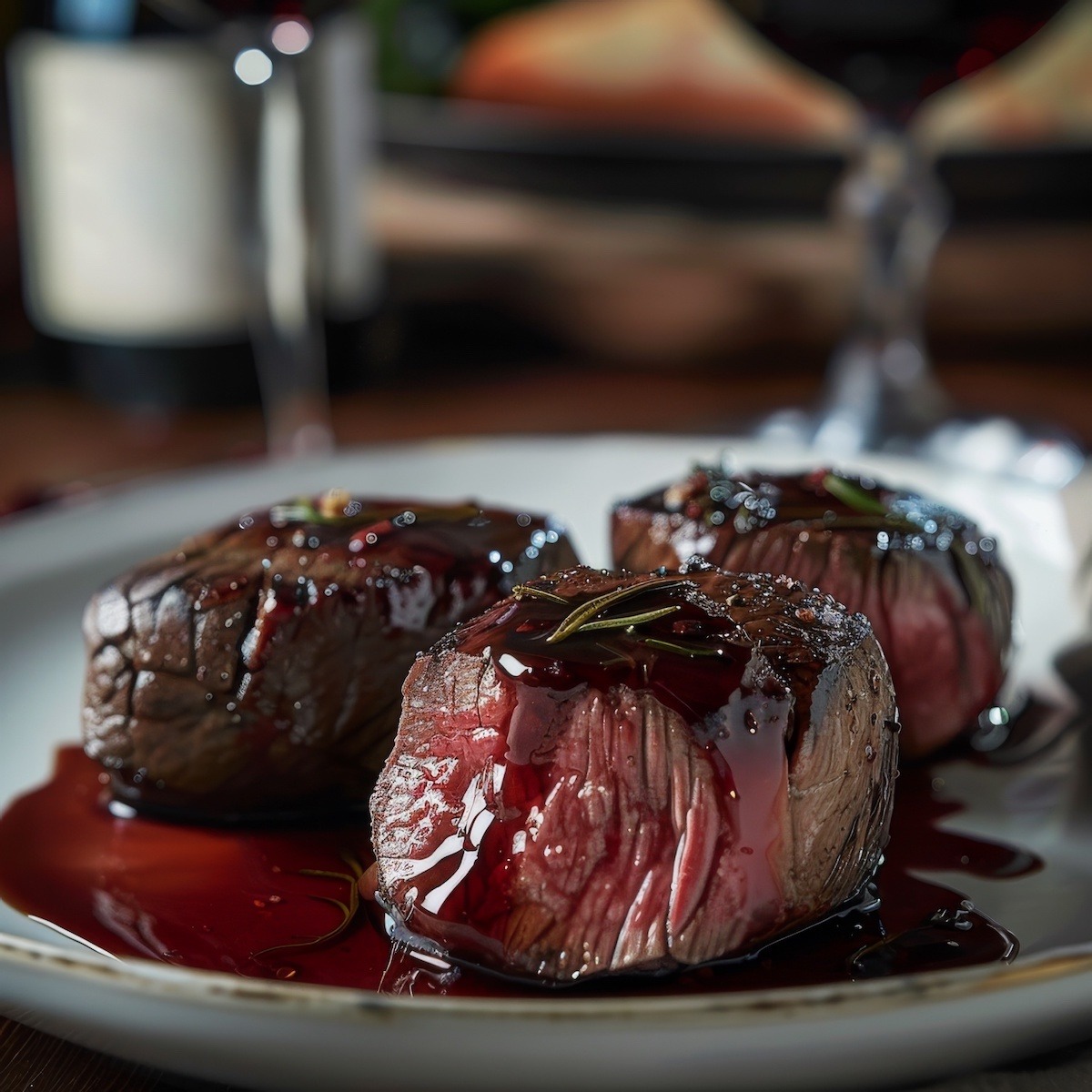
Making This Sauce With Demi Glace
Incorporating demi-glace into the recipe adds depth, richness, and complexity to the final sauce. Here’s how using demi-glace changes the recipe for Merlot sauce:
Aspect | Description | Why It Matters |
| Richness and Body | Demi-glace adds velvety texture and deep, meaty flavor as a base for Merlot sauce. | Enhances mouthfeel and gives the sauce a luxurious, full-bodied foundation. |
| Complex Flavor | Slow-reduced stock and aromatics in demi-glace offer layered, savory depth. | Balances Merlot’s fruitiness with earthy, nuanced flavor for a well-rounded sauce. |
| Reduction Time | Demi-glace is already concentrated, reducing the time needed to cook down wine. | Speeds up sauce preparation while still achieving intensity and depth. |
| Consistency | Naturally thick and glossy, demi-glace helps the sauce cling to proteins and sides. | Creates a restaurant-quality finish and helps the sauce coat food attractively. |
| Umami Boost | Caramelized proteins in demi-glace provide strong umami notes. | Amplifies savoriness, making the sauce more satisfying and enhancing the overall dish. |
Using demi-glace in a Merlot sauce recipe elevates the sauce to a new level of sophistication, creating a luxurious and flavorful accompaniment that enhances a wide range of dishes.


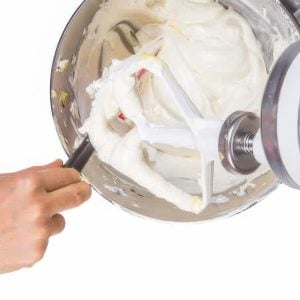
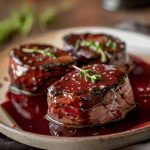
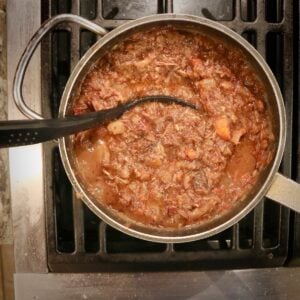
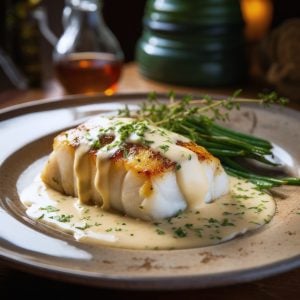
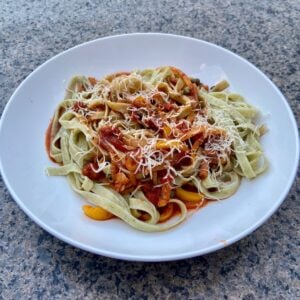
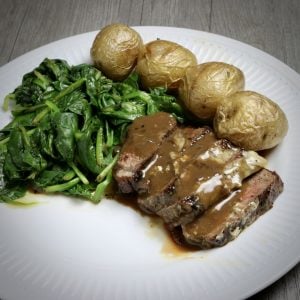
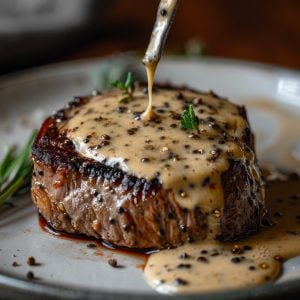

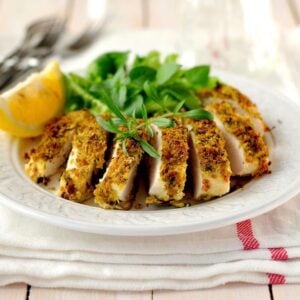
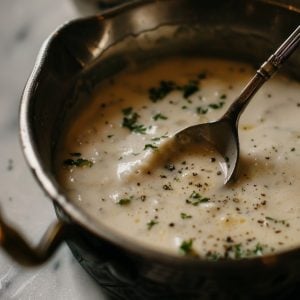


One Response
Nice recipe..Thanks for sharing.